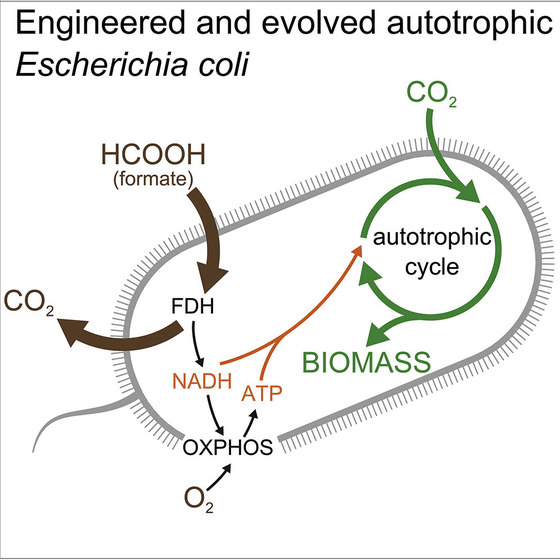
Israel’s Weitzmann Institute of Science has announced that it has succeeded in manipulating the genes of E. coli, which normally consumes organic matter and emits carbon dioxide, to grow by absorbing carbon dioxide. According to the scientific journal Nature, E. coli grown on carbon dioxide can be expected as a biofuel or an idea to curb the increase in carbon dioxide in the atmosphere.
Plants or photosynthetic cyanobacteria are autotrophs that use light energy to convert carbon dioxide into carbohydrates. However, such organisms are difficult to manipulate, and bioengineering applications are not very advanced.
On the other hand, E. coli is relatively easy to manipulate. In addition, because E. coli is easy to cultivate and grows quickly, genetic changes can be optimized and changes can be tested quickly. However, E. coli is a heterotrophic organism that obtains carbon from sugars such as glucose and uses it for metabolism to release carbon dioxide as waste.
The research team is conducting a study of E. coli that uses carbon dioxide as a carbon source instead of glucose. When E. coli consumes carbon dioxide, it is expected to potentially curb the effects of global warming. The research team inserted a gene that expresses an enzyme that plants and bacteria use for photosynthesis into E. coli DNA. This enzyme can obtain the energy needed to synthesize organic matter from carbon dioxide from light energy. However, E. coli does not photosynthesize. Therefore, the research team inserted an enzyme gene into E. coli DNA that extracts electrons from formic acid and converts them into energy.

The research team predicted that E. coli, which only uses carbon dioxide as a carbon source, will be mutated through environmental adaptation by culturing E. coli with 250 times the concentration of carbon dioxide and a small amount of glucose than the earth’s atmosphere. Appeared.
Under laboratory conditions, E. coli, which has been reborn as an autotrophic organism, doubles every 18 hours in the atmosphere with a 10% carbon dioxide concentration. However, at about 0.04% of carbon dioxide concentration in the Earth’s atmosphere, it cannot survive without glucose. The research team reveals the process by which E. coli evolves to absorb carbon dioxide, and points to a faster bacterial growth rate, and to allow it to grow even at lower carbon dioxide concentrations.
Experts said that this study shows that the natural world can be improved through advances in biotechnology. As it is a proof-of-concept, it will take several years for the E. coli to be optimized. Related information can be found here .


















Add comment